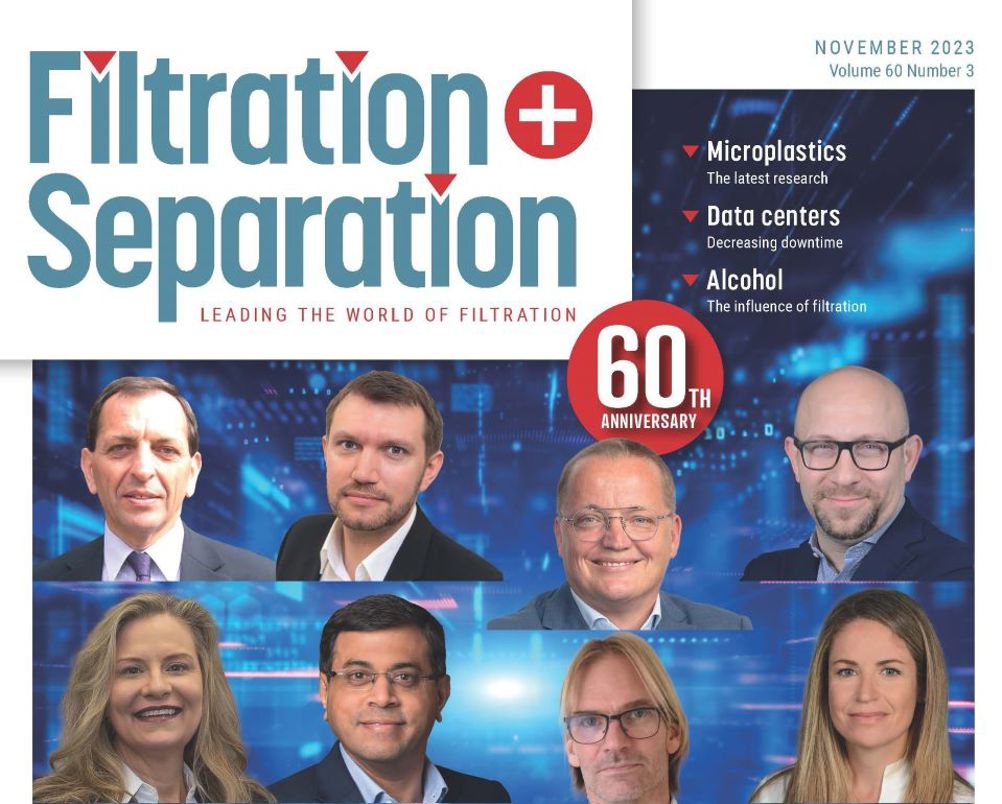CLICK HERE TO READ THE 60TH ANNIVERSARY ISSUE
What developments in technology will be the most significant over the next 20 years?
Naresh Narasimhan: Materials science, additive manufacturing and digitization will have a significant impact on the filtration industry over the next 20 years. Additive manufacturing will continue to rise in popularity across all industries because it allows for greater design flexibility. Certain applications now demand more complicated shapes and structures which would be extremely difficult to produce using traditional manufacturing methods. The creation of new materials with unique properties will be critical as filtration needs across industries need to evolve to meet both end-user needs and global environmental regulations. Digitization will also have a significant on the filtration industry. Smart filtration systems with real-time monitoring capabilities will become essential to efficient and sustainable operations. Pall has introduced IoT solutions for the beer and wine industries and with access to real-time and historical data, process optimization becomes more efficient, which improves overall operations.
What industry trends will cause this development?
I believe climate change will be the primary driver of these technology advancements. Each industry will have its own unique trends and demand drivers, but sustainability and sustainable manufacturing practices will underpin all future technology development. As new and more stringent environmental regulations continue to impact all industries customers will have to navigate these regulations while maintaining operational efficiency and product quality. Filtration will continue to help them meet their production and sustainability goals.
What key challenges do you expect your industry to face over the next 20 years?
I think the biggest challenge the filtration industry will face over the next two decades is speed and agility. We’ve seen such a rapid pace of innovation lately and with new and more strict environmental regulations, filtration leaders need to increase their speed to innovation to be competitive. When I think back to the early days of the Covid-19 pandemic, companies like Pall who were part of the vaccine supply chain were able to move quickly and collaborate to fast track vaccine development. That kind of agility and focus should become the norm as the filtration industry plays an integral role in so many life-changing innovations.
What sectors present the most exciting opportunities for the filtration industry?
There are a lot of exciting opportunities for the filtration industry. The semiconductor space presents some great opportunities. Historically, the semiconductor space has been a driver of filtration and purification innovation as the purity standards are extremely high. The demand for 5G, AI and IoT devices continues to grow so will the need for more advanced chips that require purity levels measured in parts per quadrillion. We will continue to be challenged to develop technologies that can remove impurities at smaller and smaller scales. Carbon capture, utilization, and storage (CCUS) is another area where there is huge opportunity for the filtration industry. CCUS is instrumental to achieving net-zero targets. Each capture and utilization approach has unique filtration and separation needs that can be addressed using advanced filtration technologies.
What will be the most surprising change in the next 20 years and why?
I believe in the next 20 years, our sustainability practices and corporate social responsibility programs will significantly influence our customers purchasing decisions. Organizations want to work with other organizations that are committed to doing good. With climate change being one of the biggest global hurdles we face as a society, it won’t be enough to just have filtration expertise. If our customers are going to trust us to help them meet their sustainability goals, we need to be just as committed to reaching our own and introducing new, innovative initiatives that help the planet. At Pall, we prioritize the environment and sustainability through a number of initiatives. We continuously look for ways to reduce emissions, and this includes reducing the impact of the carbon footprint generated from our IT infrastructure.
Naresh Narasimhan was interviewed as part of the Future Predictions panel in the 60th Anniversary issue of Filtration+Separation.








